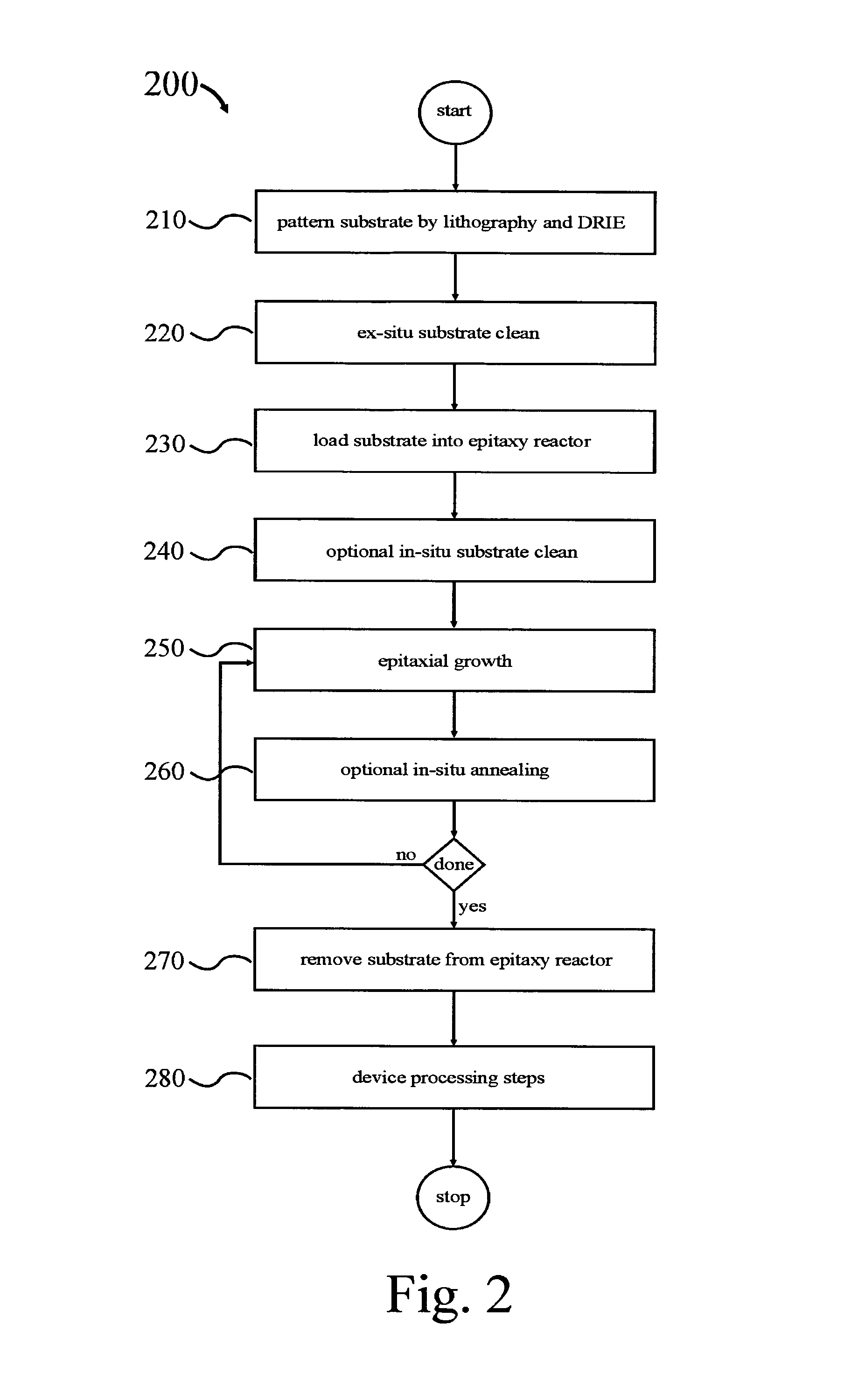Dislocation and stress management by mask-less processes using substrate patterning and methods for device fabrication
a substrate patterning and stress management technology, applied in the direction of semiconductor devices, basic electric elements, electrical equipment, etc., can solve the problems of reducing the performance of the device, so as to reduce minimize the density of the threading. , the effect of reducing the density of the threading
- Summary
- Abstract
- Description
- Claims
- Application Information
AI Technical Summary
Benefits of technology
Problems solved by technology
Method used
Image
Examples
examples
Substrate Patterning
[0105]Referring now to FIGS. 8(a)-8(c), scanning electron microscopy (SEM) images 800 of patterned substrates may be seen in perspective (a) and plan (b)-(c) view. Here, the substrate is a Si(001) wafer which was patterned by standard photolithography and the Bosch process, leading to the ripples on the side walls of Si pillars 810. In FIG. 8(a) pillars 810 are about 1.8 μm wide, while the width of trenches 812 is about 2.2 μm. The plan view SEM image of FIG. 8(b) shows two different kinds of trenches with widths of about 1.7 μm for narrow trenches 830 and 2.9 μm for wider trenches 840, while pillars 820 are about 1.3 μm wide. Wider trenches 840 are about 8 μm deep, and narrow trenches 830 slightly less.
[0106]FIG. 8(c) shows other examples of patterns, A1, B1, C1 and D2, composed of elevated substrate regions 850, 860, 870 and 880 of different size and distance. Many more substrate patterns have been examined with elevated features ranging from submicron to tens ...
PUM
 Login to View More
Login to View More Abstract
Description
Claims
Application Information
 Login to View More
Login to View More - Generate Ideas
- Intellectual Property
- Life Sciences
- Materials
- Tech Scout
- Unparalleled Data Quality
- Higher Quality Content
- 60% Fewer Hallucinations
Browse by: Latest US Patents, China's latest patents, Technical Efficacy Thesaurus, Application Domain, Technology Topic, Popular Technical Reports.
© 2025 PatSnap. All rights reserved.Legal|Privacy policy|Modern Slavery Act Transparency Statement|Sitemap|About US| Contact US: help@patsnap.com



